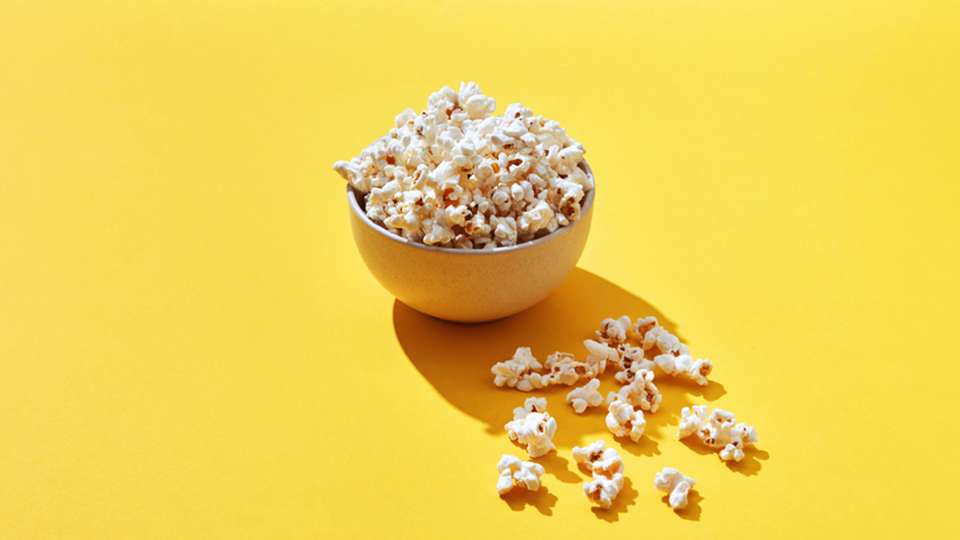
Volume eating is making a comeback. That’s right, it’s not new — it may be all over social media these days, but it originates from a 2013 diet book.
Volume eating is supposed to aid in weight loss and prevent weight gain, without forcing people to eat small portions of food or completely swear off certain foods.
This sounds promising in theory — but does the reality hold up?
What are high-volume vs. low-volume foods?
Volume eating emphasizes the consumption of low-calorie, high-volume foods that have a high water and fiber content. The underlying concept is to enhance satiety and feelings of fullness while minimizing calorie intake.
The idea is that foods that contain a lot of water, fiber or even air will fill your stomach up and prevent you from overeating foods that are higher in calories and that might contribute to unwanted weight gain.
High-volume foods (the kind you’re supposed to eat more of with volume eating) include:
- Watermelon, plus other melons
- Grapes
- Stone fruits like peaches
- Citrus fruits
- Cucumber, lettuce and celery
- Egg whites
- Grains like oatmeal and popcorn
Low-volume foods (like oils, nuts and nut butters, full-fat dairy products, canned coconut milk and foods with high sugar content like juice or dried fruit) should be eaten in moderation.
What are the pros of volume eating?
When viewed as a tool to guide healthy eating rather than a complete diet, volume eating could be helpful.
Focusing on eating more fruits and vegetables is a good strategy for almost everyone — not for weight loss but for your health in general. Fruits and veggies (fresh, frozen or canned) provide the energy and essential nutrients your body needs to function, help with gut health and protect against chronic diseases.
Eating certain high-calorie foods, like fast food, is best done in moderation anyway — not necessarily because of how many calories they have, but because when eaten regularly year after year, they can increase the risk for conditions like diabetes and heart disease.
Additionally, Dietary Guidelines for Americans 2020-2025 recommend limiting added sugars to less than 10% of daily calories and saturated fats to less than 10% of daily calories. Low-volume foods like fast food or packaged, ultra-processed foods are often higher in added sugars and saturated fats, so eating less of them and more of high-volume foods could help meet these dietary guidelines.
For all the snackers out there, volume eating can be a helpful idea to keep in mind when deciding what to snack on. For example, there’s nothing wrong with turning that leftover cupcake into a midday snack, but the truth is it might not satisfy your hunger for very long. Choosing high-volume snacks rich in protein, heart-healthy fats and fiber can ensure your snacks satisfy your hunger until your next meal.
What are the cons of volume eating?
“While I am certainly in favor of individuals incorporating fruits and vegetables into their diet, it is important to approach diets like this one with caution, as they may potentially contribute to disordered eating patterns,” says Amanda Li, a registered dietitian nutritionist at UW Medicine.
Also, choosing foods solely based on how high-volume they are, rather than what nutrients they have, can set you up for not feeling satiated by what you eat and potentially put you at risk for nutrient deficiencies.
For example, eating a giant bowl of melon for breakfast and some celery sticks and popcorn for lunch would be considered volume eating but would not give your body the fuel to keep you energized throughout the day.
In general, Li is wary of weight-loss diets — even ones like volume eating that may seem harmless.
“Diet culture perpetuates the idea that achieving health is contingent upon weight loss, which can be quite tempting. However, it often leads individuals in a harmful cycle of restrictive eating, battling cravings, obsessive thoughts about food, overeating, binging, and overwhelming feelings of guilt and shame,” she explains.
You’re not alone if you’ve lost weight only to gain it back. Research shows that sustaining weight loss long-term is challenging for most people, which is why prioritizing lasting changes like eating more fruits and veggies are more beneficial for your health than trying a fad diet, Li says.
What is the best eating strategy for weight loss?
First off, weight loss is not always a good thing. It’s important to ask your doctor if weight loss is worthwhile for your overall health — and then make a sustainable plan with them that doesn’t involve restrictive diets, overexercising, misuse of weight loss medications or many of the other harmful things that often go hand-in-hand with weight loss attempts.
Healthy weight varies and depends on many factors unique to each person. Your health is made up of so much more than what you weigh, too. Mental well-being, physical activity, sleep, making meaningful connections with others — all of these are crucial for health but not dependent on weight.
If you are looking to eat in a way that promotes your health, Li recommends intuitive eating practices that are helpful plus backed by research:
- Reject the idea that you have to diet and that your body has to look a certain way.
- Tune into your body's hunger and fullness cues, providing it with adequate fuel throughout the day.
- Avoid labeling foods as “good” or “bad” — all foods have a place.
- Let go of perfectionism and instead focus on eating food that makes your body feel good.
“If you are struggling with food, seek out guidance from a registered dietitian who can provide individualized and evidence-based nutrition advice” Li says.

 Healthy ideas for your inbox
Healthy ideas for your inbox





